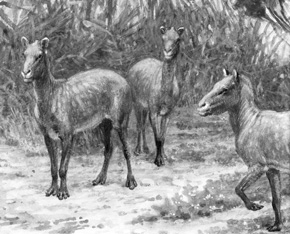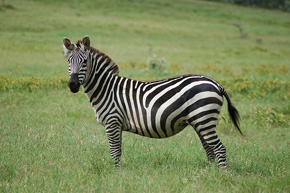Equoidea
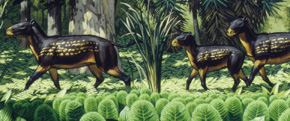 Pictured left: Reconstruction of the early equid Orohippus from the Eocene of North America. Rob Barber\AMNH.
Pictured left: Reconstruction of the early equid Orohippus from the Eocene of North America. Rob Barber\AMNH.
Equoidea: the Equoidea includes true horses (Equidae) and another group, the paleotheres (Palaeotheriidae). The earliest equoids were very primitive with teeth, skulls, and skeletons not much different from the ancestors of perissodactyls. There are only a few very minor dental characters known that unite Equoidea. Early Equoids are common in the fossil record of both North America and Europe and until recently all of these species were grouped together into a single genus, Hyracotherium. Hyracotherium was the size of a small dog, had four front toes and very small unspecialized teeth. True horses were though to have evolved from Hyracotherium. However, more recent research suggests that not all of these early equoids are in the evolutionary lineage that lead to horses, and they have been divided into several different genera. According to these findings, Hyracotherium itself, is restricted to Europe, is not in the main line of horse evolution, and is more closely related to the other equoid group, the Palaeotheriidae. Early North American equoids that were once classed as Hyracotherium, such as Eohippus, Xenicohippus, and Protorohippus, belong within the true horse family, Equidae.
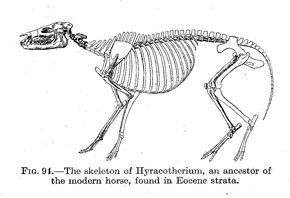
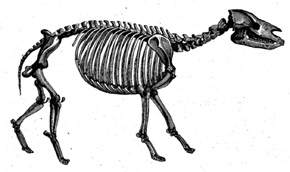
Left: Skeleton of the early perissodactyl Hyracotherium. Right: Skeleton of the palaeothere Palaeotherium from the Eocene of Europe.

